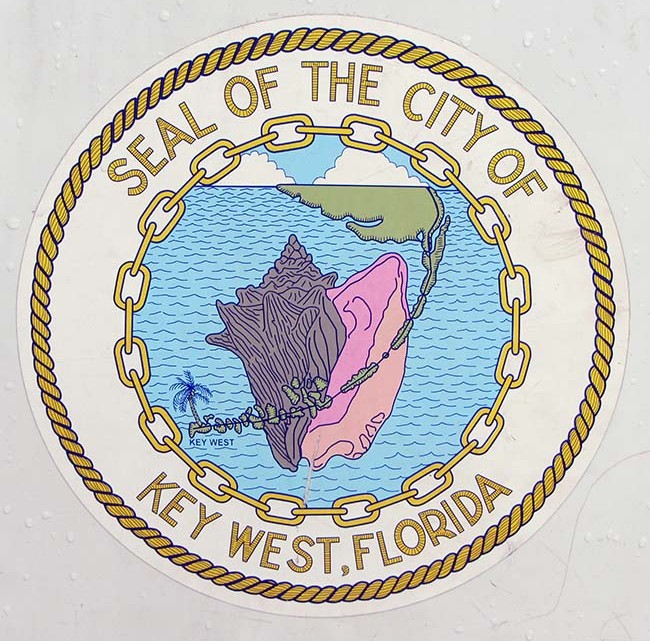Ready or not, embrace sea level rise
BY PRU SOWERS
KONK LIFE STAFF WRITER
The issue of climate change and sea level rise has become a political hot potato, with some in Key West arguing the city is heading for a watery crisis and some believing just as passionately that it isn’t.
But we are way past that debate, says Val Marmillion, Key West resident and executive director of America’s Wetlands Foundation, a non-profit organization that educates government officials and the public on the potentially disastrous impact of wetland loss. Whether or not the ocean will rise as much as predicted – six to 10 feet by 2100, according to the National Oceanic and Atmospheric Administration (NOAA) – many people believe in sea level rise and, as a result, will stop investing in Key West’s real estate market, its tourism industry, its entire business community unless the city comes together to combat that perception, Marmillion said.
“It’s not that the water is rising,” he said. “It’s whether our economy at one point will reach a tipping point where people say we can’t invest there anymore.”
Marmillion outlined a series of steps his Foundation is recommending to coastal areas around the world to achieve real as well as public relations stopgaps to the impression they will be underwater by 2100. Instead of trying to stop the water, like the seawall Broward County officials are considering, Key West can embrace the expected flow of water by building up beaches and dunes through sand renourishment; create “water integration” in local parks, recreation areas and low-lying areas; encourage floating home communities and raised housing; and even digging trenches in residential areas to allow the encroaching water to flow easily between homes and not into them, similar to the canals in Amsterdam.
“We don’t have to build floating communities tomorrow. We don’t have to dig out New Town and put rivers in-between everybody’s houses. But we do have to begin thinking about those things,” Marmillion told city commissioners at their June 4 meeting. “In 2100, maybe, we won’t have a road [US 1] here. But does that mean we can’t live here? We lived here a long time before there were roads.”
Understand the problem, take action and be flexible on solutions is what the Wetlands Foundation is advising coastal areas to do. Create green roofs where plants and other foliage that soak up water are planted. Advance solar energy to create a sustainable and safer power source. Build “water sinks” to capture tidal flows. If Key West begins to take measures such as these, it can promote itself as a “sea safe community,” Marmillion said, thereby encouraging people to stay in the city, not sell out and leave.
“Don’t allow your people to retreat. You keep your people here and allow them to adapt to what’s changing,” he said, adding, “Sea level rise and opportunity are not usually put together.”
This “new normal” can be achieved by city officials aligning development plans, building codes and local laws to promote one vision of a sea safe community, Marmillion recommended. But that vision has to be embraced by residents and the business community, as well, otherwise it won’t work, he said. When Commissioner Greg Davila asked how the city can encourage private developers to take the lead in constructing buildings and homes resistant to sea level rise, Marmillion said the city could grant easements near wet areas to allow builders to experiment with new construction. Then, “beat the drums” about that success, he said.
“So, we just need to get the ball rolling,” asked Commissioner Jimmy Weekley?
“Yes, definitely. Let’s get it rolling and be in front of the game,” Marmillion said.
According to NOAA studies as well as Zillow, the online real estate sales data company, Key West is 56 percent likely to suffer a three-foot or higher flood by 2050. That will threaten the almost 10,000 local residents who live in areas below three feet above sea level and dramatically depress home prices long before a flood would occur. NOAA also predicts sea levels around Key West will rise 10.7 feet by 2100.
“This portfolio is what we face down the road,” Marmillion said. “So, what do we do about it? Do we retire, do we retreat, do we run or do we make Key West a livable place for a long time?”
The difficulty of achieving what Marmillion is suggesting was not lost on some commissioners. Commissioner Sam Kaufman pointed to the challenge of getting local, state and federal agencies to work together. And how will Key West officials deal with residents who can’t afford to raise their homes, he asked.
“It seems that there’s so many layers of government. There are so many bureaucracies. There are so many agencies… To convene a process whereby everybody is going to be on the same page? I don’t know,” Kaufman said.
[livemarket market_name="KONK Life LiveMarket" limit=3 category=“” show_signup=0 show_more=0]


No Comment